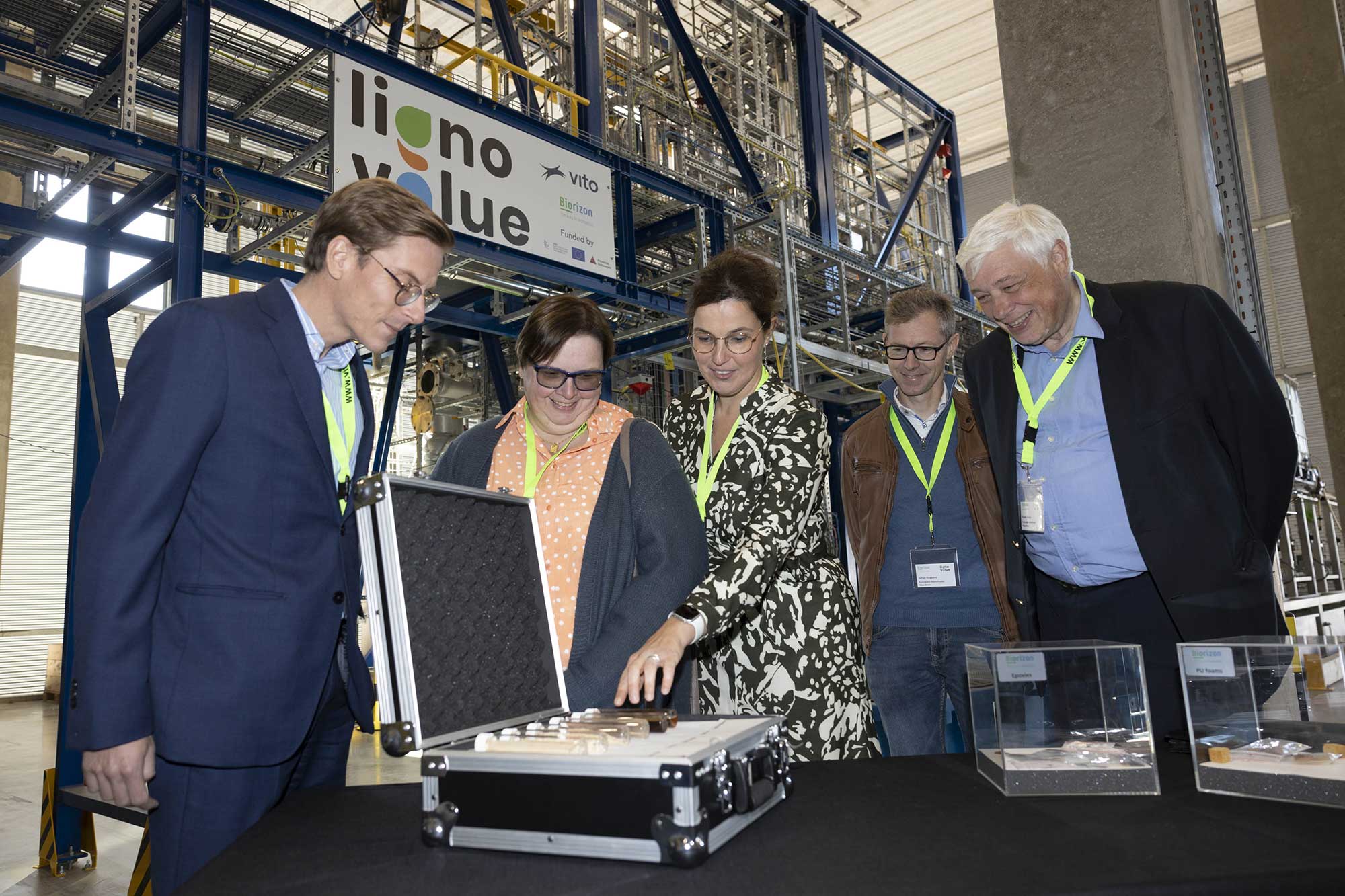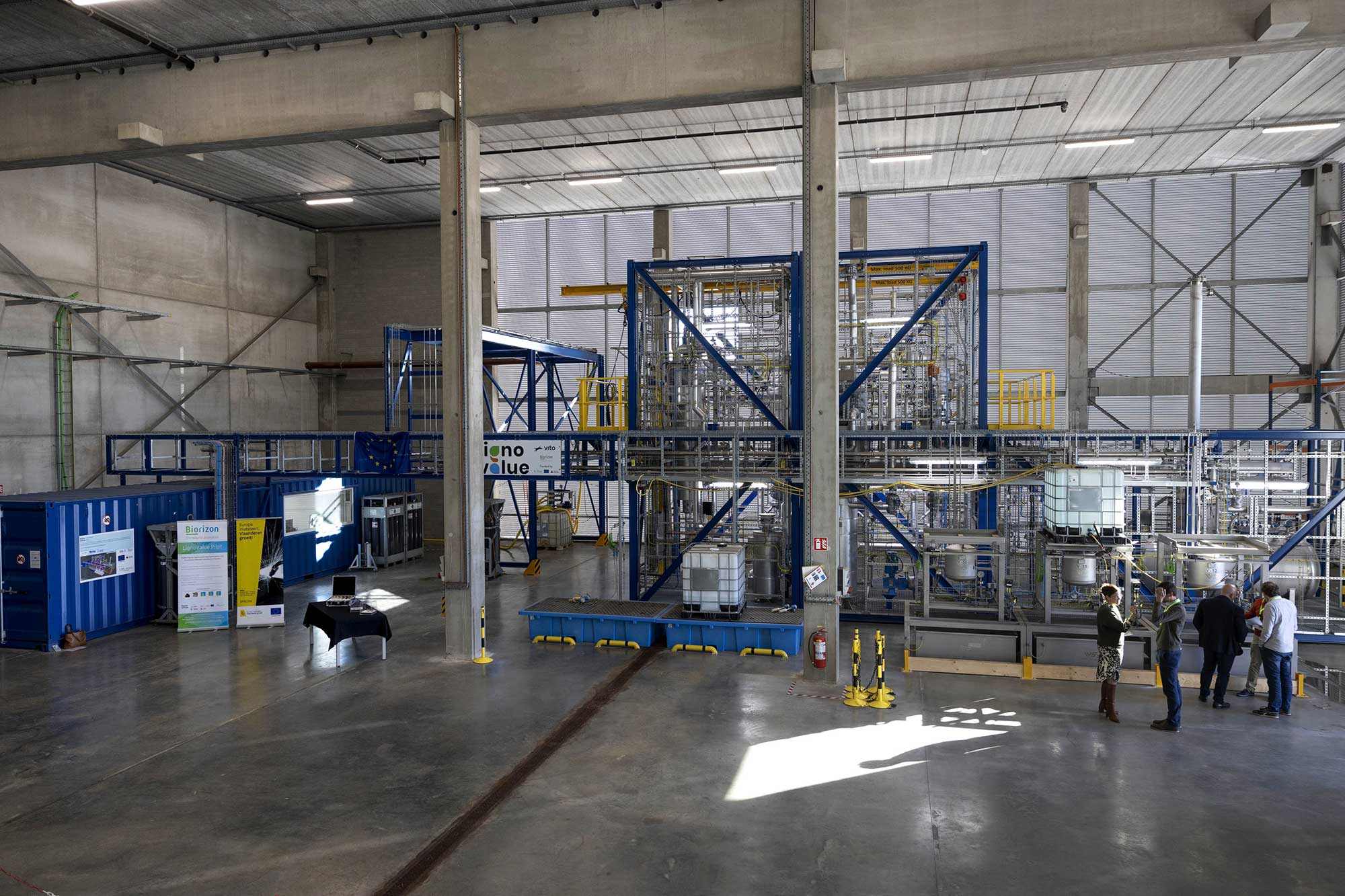Lignin from plant biomass is ideally suited as a feedstock for the sustainable production of bioaromatics. This is because it naturally has unique properties, such as stability, stiffness, scratch resistance, waterproofness, UV protection, adhesion and thermal resistance. At the same time, these traits complicated the extraction of lignin from biomass until now. It was simply too difficult, according to Ludo Diels, chairman of the advisory board of Shared Research Centre Biorizon. That is why almost all aromatics used in the chemical industry are of fossil origin. They make up as much as 40 per cent of all chemical building blocks used in industry. “If we really want to make an impact on the climate from within the chemical industry, we need to make bio-aromatics,” he says.
Independence
The Flemish and Dutch applied research organisations, VITO and TNO, joined forces almost a decade ago in the Biorizon project, where they worked on three high-efficiency routes (‘horizons’) to develop bioaromatics, via thermochemical conversion (pyrolysis and gasification), from industrial C5 sugars and from lignin.
“Thanks to these three horizons, selected in collaboration with industry, we are no longer dependent on raw material suppliers from abroad. We can now make anything we want in chemistry, from our own sustainable feedstocks: both bio-based drop-ins for fossil chemicals, and completely new molecules that cannot be made at all in a fossil system, or are too complex or too expensive to do so.”
Flexibility
The LignoValue Pilot Plant was realised with support from the European Regional Development Fund (ERDF), Worley Belgium and PMV. Zeton built the plant in the Netherlands and from January this year onwards it was shipped in parts to the site in Mol, near VITO’s site. Safety, material supply and product flow are guaranteed here.
“The pilot plant consists of four identical catalytic reactors,” says Kelly Servaes, project manager of the lignin horizon within Biorizon. “They give us the flexibility to test various process conditions and use a variety of feedstocks. This allows us to produce the desired bio-aromatic fractions for market-oriented application and product development.”
The plant has the capacity to produce more than 100kg of innovative bioaromatics per day via continuous processing. For this purpose, lignin is cut into smaller chemical building blocks in a solvent with a catalyst and hydrogen. All this should make it possible to provide the required techno-economic proof-of-concepts to achieve the ultimate goal of building and operating a demonstration plant in Flanders for the conversion of lignin into bio-based functionalised aromatics and the development of a lignin-based value chain of new chemicals.
Invitation
“We want to invite anyone who uses aromatics to challenge us to develop a bio-based alternative for them,” says Ludo Diels. “Think of resins, coatings, sealants, adhesives, inks and all kinds of plastics, with or without antimicrobial properties. We have high-quality facilities in the Netherlands and Flanders, we have a team of experts and an extensive community. By 2025, we want to be able to make our first commercial products.”
Interested companies can join the Shared Research Centre Biorizon community free of charge and register for Biorizon’s 9th annual virtual event on Thursday 1 December, including a keynote from Decathlon.
This article was produced in collaboration with Circular Biobased Delta.
Photo’s: Stefan Dewickere/Biorizon






